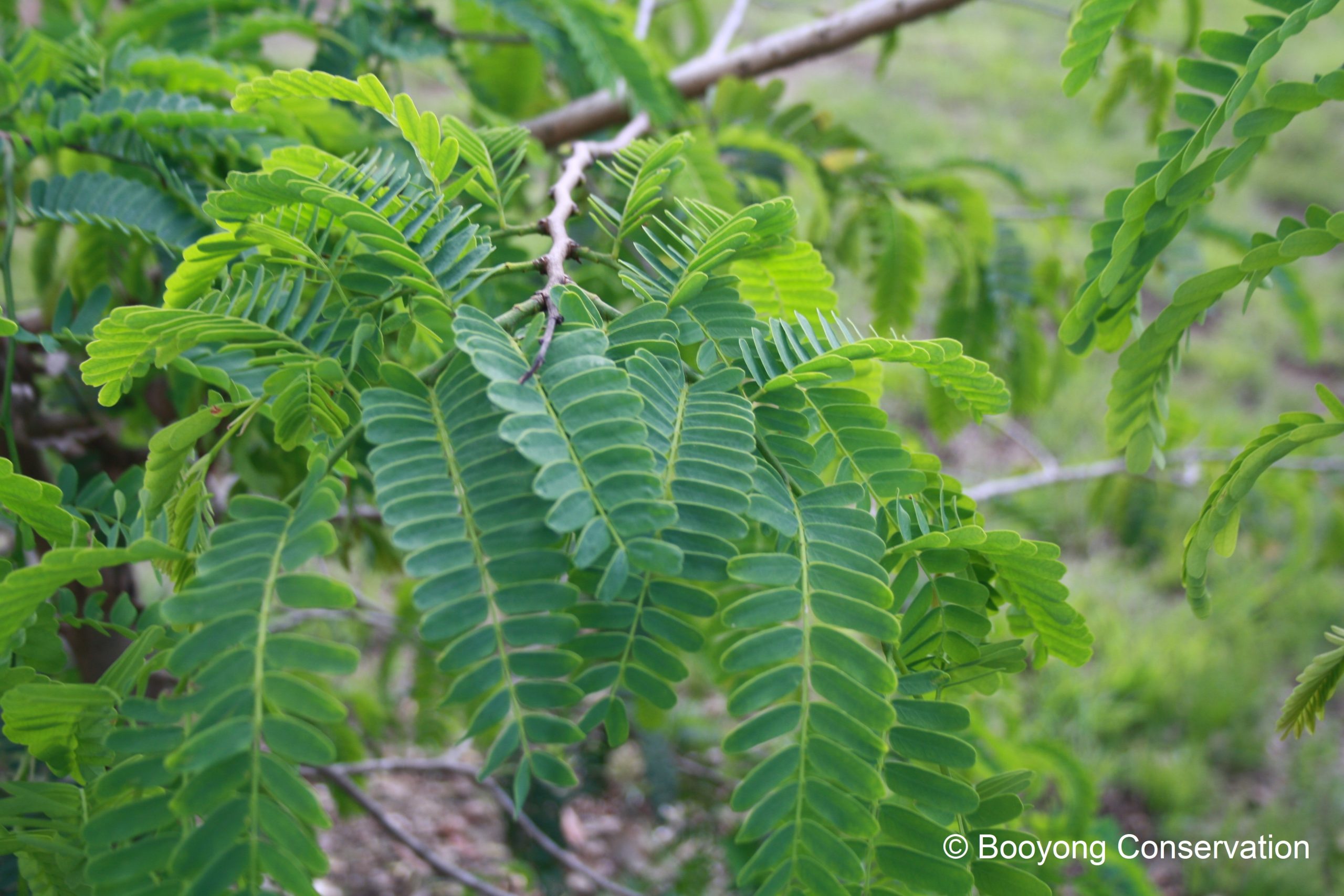This one was hard to identify and we were happy to discover it is a Tamarind Indica Tree.
Growing – The tamarind tree is self-pollinating and typically grown in drier tropical or subtropical zones with an average annual daytime temperature within 20 – 35 degrees. It is slow growing and will last for many years reaching a height of 30 metres.
Care – This tree has an extensive root system, it was incredibly resistant during the drought last year; it is apparently also wind resistant but is sensitive to frost. Plant in full sun and fruit can be expected at 7-10 years (2024), with maximum yields from 15 years onward. The Indica tree is partly deciduous and can lose some leaves in Winter. It requires moderate watering and plant in soil that provides good drainage Neutral (6.6-7.3pH). Mulch at the beginning of each spring to protect roots and retain moisture. Flowers are yellow striped with red centres.
Pruning – Tamarind trees respond to coppicing and pollarding and dead wood can be regularly pruned.

Wood can also be used for firewood or charcoal and leaves can be used for mulch and they also make good fire breaks as the grass will not grow beneath them.
Companion Planting – Tamarind forms a dense and wide ranging canopy which inhibits the growth of other species beneath it.
Pests and Diseases – Not known.
Harvest – A dry season is necessary for fruit which can be expected January, February, March, April and October, November, December. A mature tree can bear about 160kg of fruit annually. When fully grown the dried cinnamon coloured seed pod (5-15cm long) can be harvested, it can also be harvested when green and immature and eaten fresh or pickled with spices.
Tamarind timber is strong and termite resistant. It is often used for furniture and has a beautiful grain, yellow with red streaks, and is hard and durable.
The pulp of the fruit, mixed with sea-salt can be used to polish silver, copper and brass. We’ll have to try that with our tea pots.
 Propagation – Seed pods last a very long time and are viable for many months.Plant seed when temperature reaches 21 degrees and pre soak seed for 24 hours in warm water and sew 1.5 cm deep in a lose sandy soil. Green cuttings can also be used.
Propagation – Seed pods last a very long time and are viable for many months.Plant seed when temperature reaches 21 degrees and pre soak seed for 24 hours in warm water and sew 1.5 cm deep in a lose sandy soil. Green cuttings can also be used.
Health Benefits – The bark is astringent and its ash may be digested or added to lotions or poultices. The bark of the tree is said to relieve sores, ulcers and rashes and young leaves are said to be used as a poultice to reduce swelling, sprains and to relieve pain.
Eating – The fruit tastes sour and goes well with chilli and is often also eaten with meat or legumes in Indian cooking. The seedpod can be eaten raw or cooked and is often used to make paste or juices. Seeds can also be dried and ground into flour or roasted as a coffee substitute.
Young leaves can be eaten raw or cooked and added to salads, flowers are fragrant and can be also be added to salads.
Tamarind Puree Recipe
Cover the pods with water and simmer for half an hour
Discard half of the water, and place the remaining water and tamarind pods into a blender and blend to a puree. Strain the mixture through muslin and place in ice cube trays and freeze.
These individual cubes can be used to flavour dishes, sauces and curries straight from the freezer.

You must be logged in to post a comment.